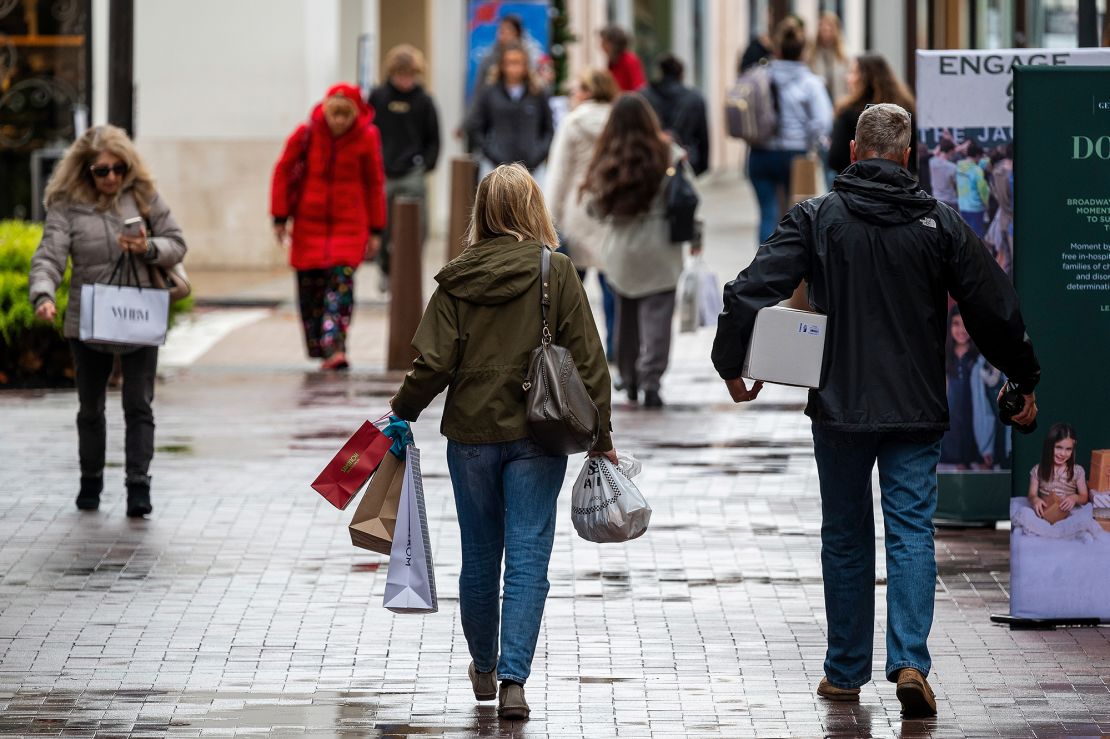It happened again — the US economy defied yet another forecast in a big way.
Economists were convinced the last quarter of 2023 had to be the one where economic growth slowed significantly after the prior quarter’s gangbuster 4.9% annualized growth rate.
Gross domestic product, the broadest measure of economic output, did slow last quarter to a 3.3% annualized rate. But make no mistake, as Larry David would say, that’s prettaaay, prettaaay good.
It’s remarkable given economists were expecting 1.5% annualized GDP growth last quarter. It’s even more remarkable considering a year ago they were all but certain there’d be a recession by now and the economy would grow at a meager 0.2% rate.
For all those big swings and misses, you probably have yourself to thank. That’s because consumer spending, which accounts for the biggest part of US GDP, has been relentless, even in the face of the highest interest rates in 23 years.
But what’s perhaps most remarkable about the US economic growth rate is how much it towers over similarly sized advanced economies.
For instance:
- The combined GDP of the 20 countries that use the euro grew at an annualized rate of just 0.1% in the third quarter of last year
- The UK is growing at a 0.2% annualized rate, according to the latest GDP estimate from November
- Japan’s economy shrank by 2.1% in the third quarter of 2023 compared to a year prior
So yeah, prettaaay good indeed.
US exceptionalism?
In addition to all the fast food we consume, the US is a special case in another way, as well.
There’s only one industrialized country, Singapore, that spent more money as a percentage of GDP on Covid stimulus than the US from 2020 to 2021, according to research that looked at 166 countries’ economic policy responses to the pandemic.
In the US, we had a whopping nearly $5 trillion that went out directly to households in the form of stimulus checks, enhanced unemployment benefits, tax credits and more.
That, combined with the fact that there weren’t too many excuses to spend money when everything was basically closed during the pandemic, meant that people had a lot more cash in the bank. When the economy reopened people were spending like there was no tomorrow.
That’s been leveling off but has hardly come to a halt due in large part to all the stimulus money still flowing through the economy, Joseph Gagnon, a senior fellow at the Peterson Institute for International Economics who previously worked at the Federal Reserve, told me.

On top of that, people aren’t getting taxed as much as they had been in prior years, as evidenced by the nation’s declining tax revenue collections, Gagnon said. That’s caused the federal government to borrow a lot more money to pay its bills.
“People are acting as if they have a lot of money to spend,” he added.
Energy prices are also playing a big role in the gap between the US and other countries’ economies.
One of the reasons inflation has been higher in Europe than in the US is because the region, including the UK, is a net importer of energy, my colleagues Alicia Wallace and Hanna Ziady previously reported. The UK and euro area economies were heavily exposed to the surge in natural gas prices that followed Russia’s full-scale invasion of Ukraine in February 2022, driving energy bills for households and businesses to record highs.
Will there ever be a breaking point?
It’s easy to say, “What comes up must come down.” That’s why Gagnon told me he’s not expecting 3.3% GDP to continue.
But here’s the thing, when it comes to the US economy lately I’ve learned that the only prediction one can get right is that something unpredictable will happen.
Thankfully, it’s been to the upside for the most part. Let’s hope it stays that way.










